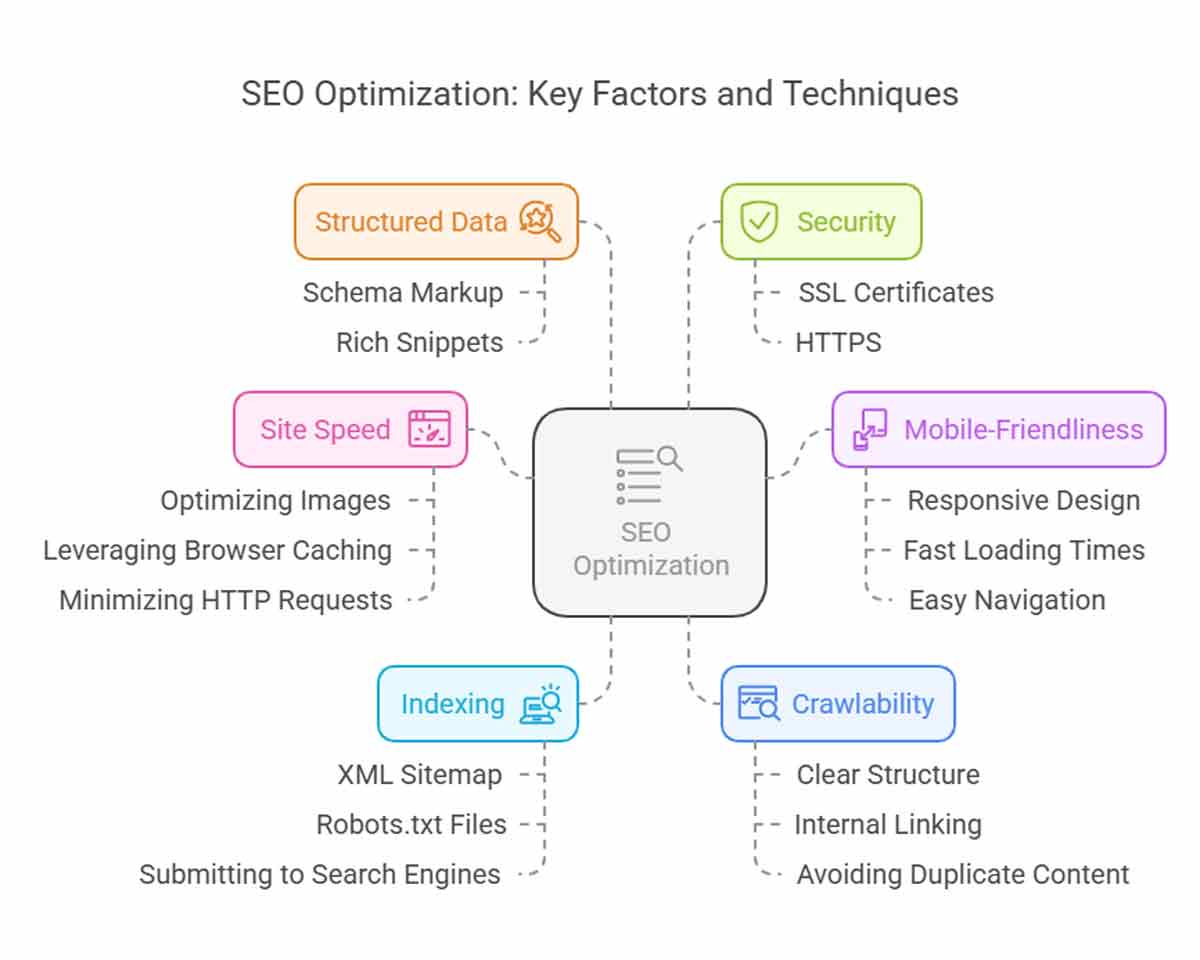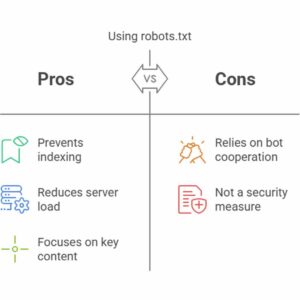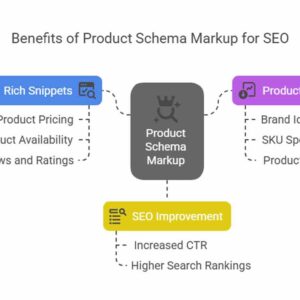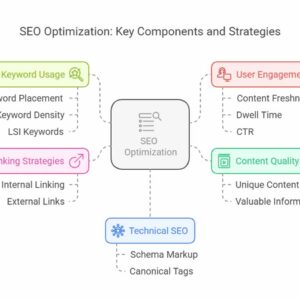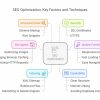Technical SEO improves your website’s performance with essential strategies like mobile-friendliness, page speed optimization, SSL, Core Web Vitals, XML sitemaps, and more.
Technical SEO Best Practices for Improved Rankings
Technical SEO Optimization
📱 Mobile-Friendliness – Ensure responsive design
⚡ Page Speed – Optimize images, scripts, and caching
🔒 SSL Certificate – Use HTTPS for security
📊 Core Web Vitals – Improve LCP, FID, and CLS
🗺️ XML Sitemap – Submit to Google Search Console
🤖 Robots.txt – Guide crawlers on which pages to index
🔗 Broken Links – Fix 404 errors and redirect properly
🍞 Breadcrumb Navigation – Helps user experience and crawling
🖼️ Lazy Loading – Load images/videos only when needed
🚀 AMP (Accelerated Mobile Pages) – Boost mobile page speed
User Experience (UX) & Engagement
🧭 Easy Navigation – Clear menus and site structure
📖 Readable Fonts – Use user-friendly font size and spacing
🚫 Ad Placement – Avoid intrusive pop-ups
📉 Bounce Rate – Reduce by improving engagement
⏳ Session Duration – Keep users on the page longer
🎥 Interactive Elements – Use videos, quizzes, and infographics
📣 Call to Action (CTA) – Encourage user engagement
📝 Content Format – Use lists, bullets, and short paragraphs
🎨 User-Friendly Layout – Clean and distraction-free design
🖼️ Multimedia Integration – Add videos, images, and graphs

